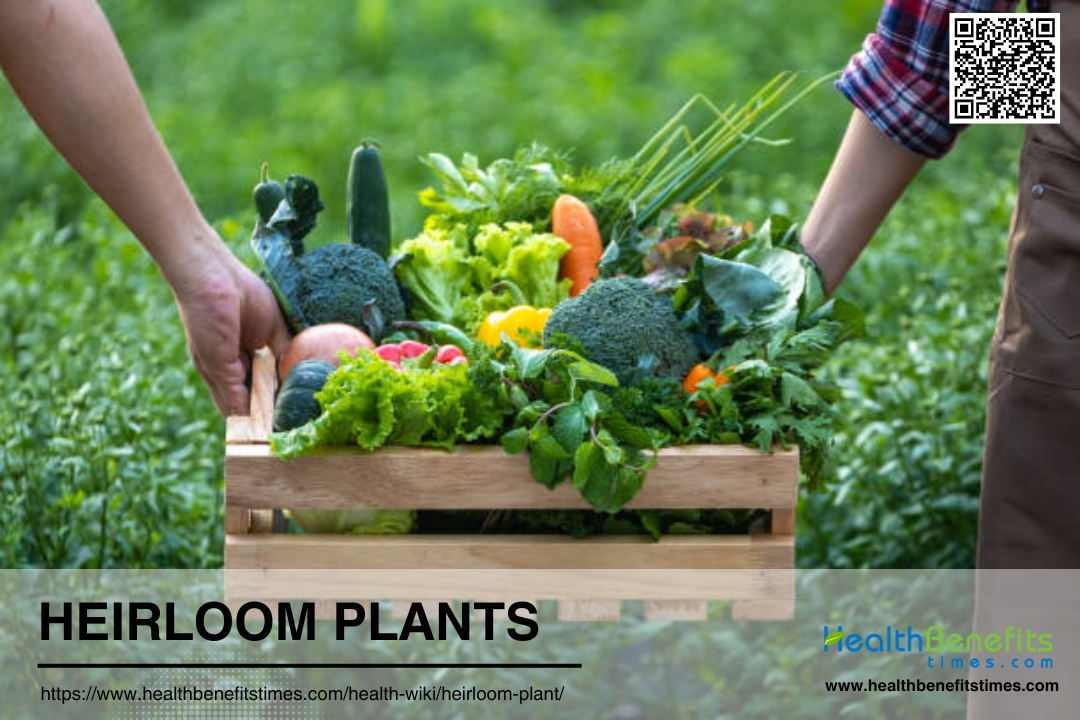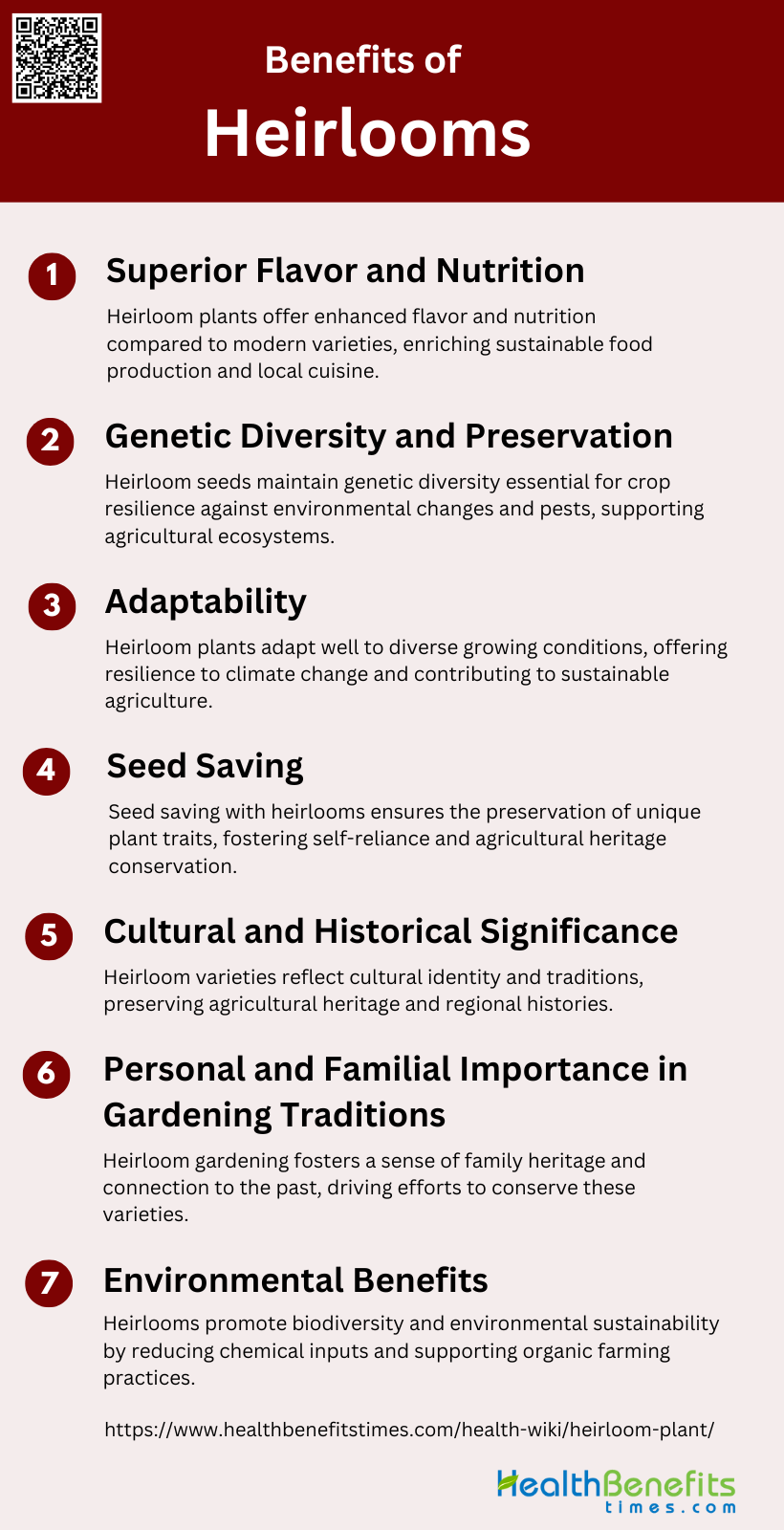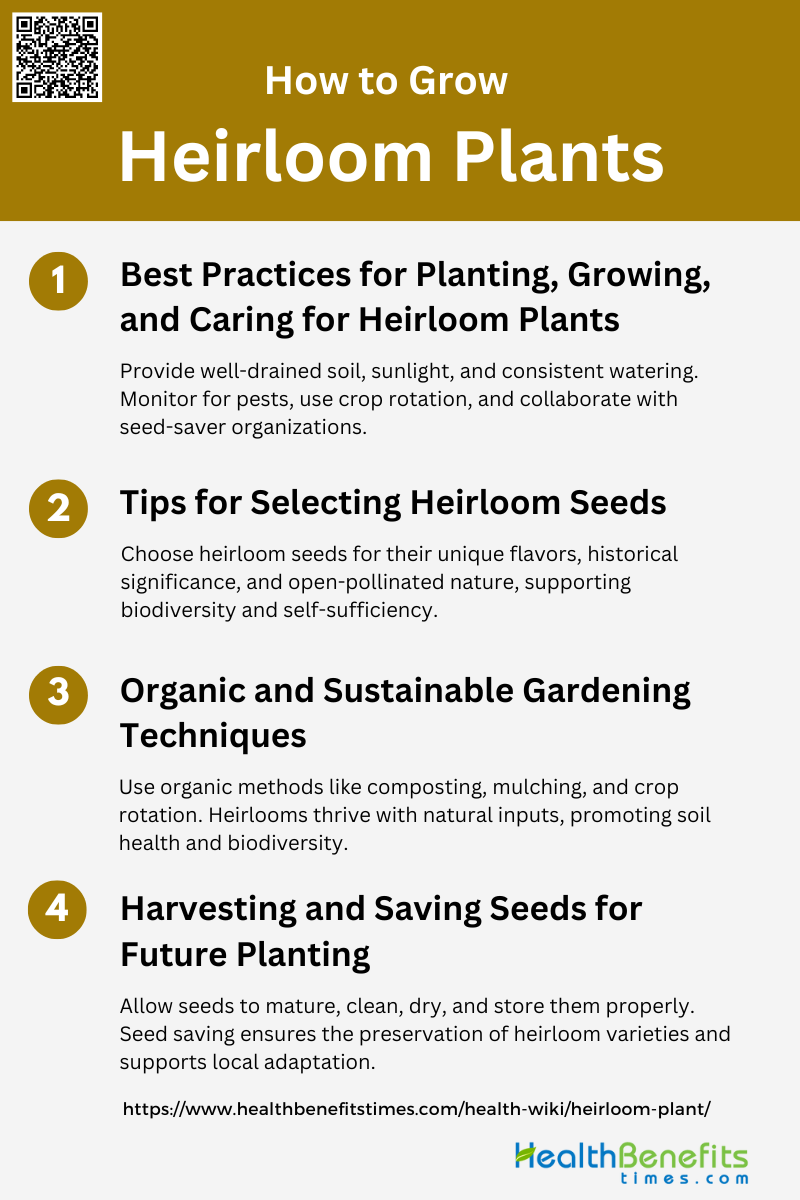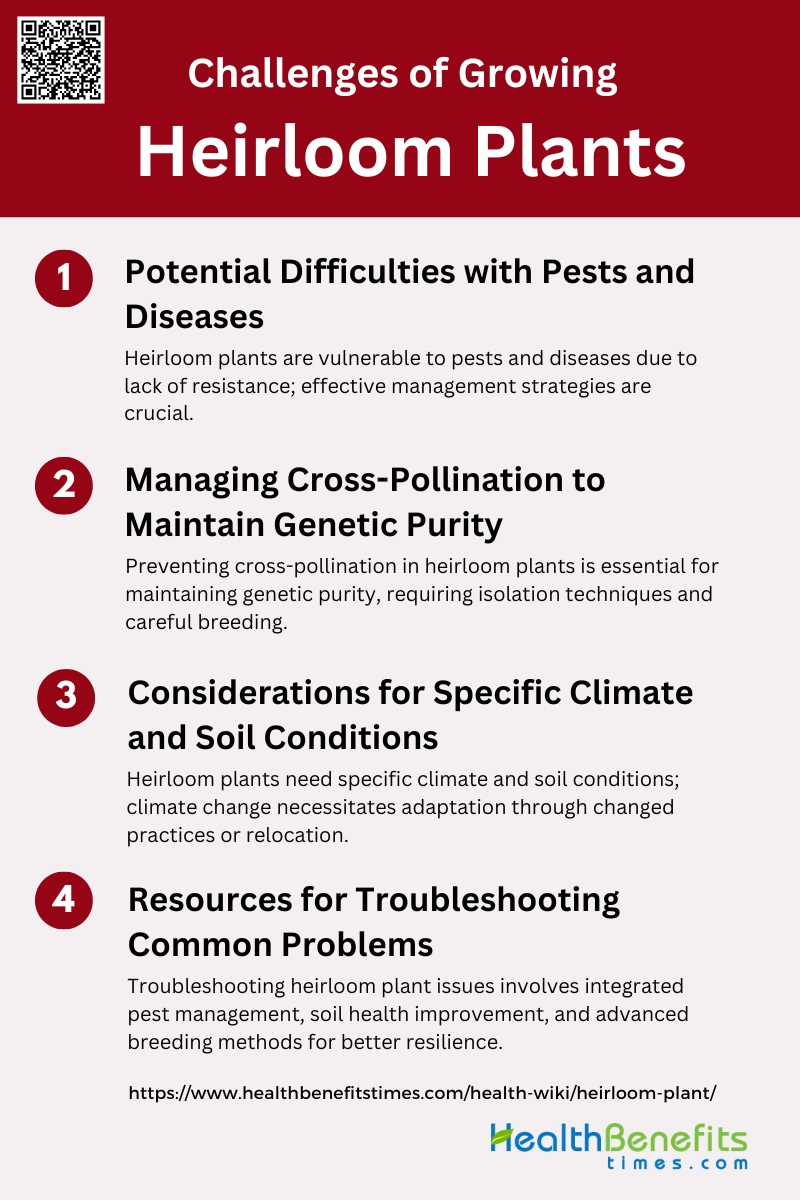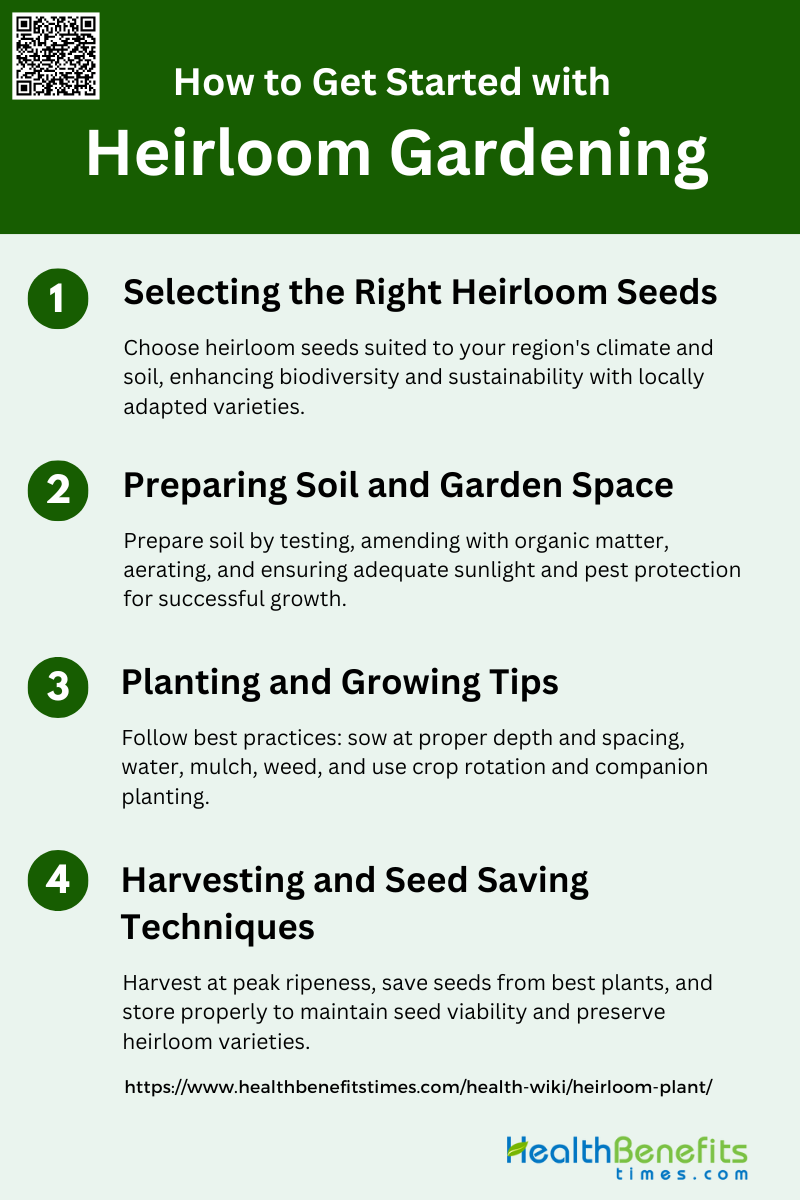An heirloom plant refers to a plant variety that has been passed down through generations, often within a family or community, and is typically grown from seeds that are open-pollinated rather than hybridized or genetically modified. These plants are valued for their genetic diversity, unique flavors, and historical significance. Heirloom varieties are often cultivated for their superior taste and adaptability to local growing conditions, making them popular among home gardeners and organic farmers. They play a crucial role in preserving agricultural biodiversity and cultural heritage, as they often possess traits that have been lost in modern commercial varieties.
Types of Heirlooms
Heirloom vegetables come in a variety of types, each with its own unique characteristics and historical significance. Understanding these types can help gardeners choose the best varieties for their needs and preferences. Here are two common types of heirlooms:
1. Heirloom Plants
Heirloom plants are traditional cultivars that have been grown and passed down through generations, often for more than 50 years. These plants are valued for their unique genotypic and phenotypic characteristics, which are not found in modern commercial varieties. Heirloom plants are significant in agriculture and gardening due to their contribution to biodiversity, cultural heritage, and culinary diversity. They are often chosen by gardeners and small-scale farmers for their historical connections, unique flavors, and adaptability to local growing conditions. Popular examples of heirloom plant varieties include Brandywine tomatoes, Moon and Stars watermelons, and Blue Hubbard squash.
2. Heirloom Seeds
Heirloom seeds are seeds from heirloom plants that have been saved and handed down through generations. These seeds are distinct from hybrid and GMO seeds. Hybrid seeds result from cross-pollinating two different plant varieties to produce desired traits, while GMO seeds are genetically modified in labs. Heirloom seeds, being open-pollinated, maintain genetic purity and can be saved and replanted year after year. Preserving heirloom seeds is vital for sustaining agricultural biodiversity, providing a genetic reservoir for future breeding, and maintaining cultural heritage. They offer gardeners and farmers a sustainable and resilient option for crop cultivation.
Characteristics of Heirloom Plants
Genetic Purity and Stability
Heirloom plants are renowned for their genetic purity and stability, which have been maintained through generations of careful selection and propagation. These traditional cultivars have been grown for over 50 years and have preserved their heritage through regional, ethnic, or family groups. The genetic stability of heirloom varieties is often a result of their adaptation to specific local conditions, which has allowed them to maintain consistent traits over time. For example, heirloom tomatoes exhibit a wide range of fruit sizes, shapes, and colors, which are stable across generations due to the preservation of specific alleles. This genetic purity makes heirloom plants valuable for breeding programs aimed at developing locally adapted, high-value cultivars.
Unique Flavors, Colors, and Shapes
Heirloom plants are celebrated for their unique flavors, colors, and shapes, which distinguish them from modern, high-yielding cultivars. These distinctive characteristics are a result of the diverse genetic backgrounds and the specific selection pressures they have undergone in different regions. For instance, heirloom tomatoes are known for their varied fruit shapes, such as beefsteak, globe, oxheart, plum, and cherry, each offering unique taste profiles and visual appeal. The green-flesh mutant of heirloom tomatoes, which retains chlorophyll and accumulates lycopene, results in a red-brown fruit with a unique flavor. These unique sensory qualities make heirloom plants highly sought after in culinary applications and local cuisines.
Adaptation to Local Growing Conditions
Heirloom plants are particularly valued for their adaptation to local growing conditions, which makes them resilient and well-suited to specific environments. These plants have been selected over decades in specific habitats, leading to the development of traits that enhance their survival and productivity in those regions. For example, a study on Balkan pepper accessions revealed significant phenotypic and biochemical diversity, indicating their adaptation to local conditions and their potential as gene sources for breeding locally adapted cultivars. Similarly, heirloom tomatoes have shown high heritability for traits such as fruit weight and ascorbic acid content, underscoring their stability and adaptation to specific growing conditions. This local adaptation not only supports sustainable agriculture but also helps in maintaining biodiversity.
Benefits of Heirlooms
Heirloom plants offer numerous advantages that appeal to gardeners and food enthusiasts alike. From their superior taste to their environmental benefits, these plants are a valuable addition to any garden. Here are some key benefits of growing heirlooms:
1. Superior Flavor and Nutrition
Heirloom cultivars are renowned for their superior flavor and nutritional content compared to modern high-yielding varieties. These traditional cultivars have been preserved and passed down through generations, often selected for their unique taste and culinary qualities. Studies have shown that heirloom tomatoes, for example, exhibit a wide range of biochemical traits, including higher levels of ascorbic acid and carotenoids, which contribute to their rich flavor and nutritional benefits. The emphasis on flavor and nutritional quality in heirloom varieties makes them a valuable addition to sustainable food production and local cuisine.
2. Genetic Diversity and Preservation
Heirloom seeds play a crucial role in preserving genetic diversity within agricultural systems. Unlike modern cultivars, which are often bred for uniformity and high yield, heirlooms maintain a wide range of genotypic and phenotypic characteristics. This diversity is essential for the resilience of food crops to changing environmental conditions and pests. The conservation efforts by seed savers and small-scale farmers help maintain this genetic diversity, which is vital for future breeding programs and the overall health of agricultural ecosystems.
3. Adaptability
Heirloom cultivars have been selected over decades, often in specific local environments, making them highly adaptable to various growing conditions. This adaptability is particularly important in the context of climate change, as these varieties can offer resilience to stress factors such as drought, pests, and diseases. Research indicates that heirloom varieties can be integrated into breeding programs to develop locally adapted, high-value cultivars that are better suited to changing climates and sustainable agricultural practices.
4. Seed Saving
Seed saving is a fundamental practice associated with heirloom cultivars, allowing gardeners and farmers to preserve and propagate their favorite varieties year after year. This practice not only ensures the continuity of unique plant traits but also fosters a sense of self-reliance and sustainability. Seed-saving organizations and collaborations between farmers, breeders, and chefs have emerged to support the conservation and distribution of heirloom seeds, thereby promoting biodiversity and the preservation of agricultural heritage.
5. Cultural and Historical Significance
Heirloom cultivars carry significant cultural and historical value, often tied to the traditions and heritage of specific regions or communities. These varieties are not just plants but symbols of cultural identity and continuity. For instance, the rich agricultural history of southern Appalachia is reflected in the diverse heirloom vegetable varieties still grown in the region, despite the decline in traditional farming practices. The cultural roots of the heirloom seed movement are diverse, encompassing immigration patterns, rural gardening practices, and the back-to-nature movement.
6. Environmental Benefits
Heirloom cultivars contribute to environmental sustainability by promoting biodiversity and resilience in agricultural systems. Their genetic diversity makes them more resistant to pests and diseases, reducing the need for chemical inputs. Additionally, heirlooms are often grown using organic and sustainable farming practices, which further enhance their environmental benefits. The structural complexity and multifunctionality of home gardens, where many heirlooms are cultivated, provide various ecosystem services and support agro-biodiversity.
7. Personal and Familial Importance in Gardening Traditions
For many gardeners and small-scale farmers, growing heirloom varieties is a deeply personal and familial tradition. These cultivars often have historical connections to family heritage and local customs, making their cultivation a meaningful practice. The preservation of heirloom seeds and the knowledge associated with their cultivation are passed down through generations, fostering a sense of continuity and connection to the past. This personal and familial importance is a driving force behind the ongoing interest and efforts to conserve heirloom varieties.
How to Grow Heirloom Plants
Growing heirloom plants can be a rewarding experience, offering both historical connection and superior produce. With the right techniques, you can ensure a thriving heirloom garden. Here are some essential steps to successfully grow heirloom plants:
1. Tips for Selecting Heirloom Seeds
When selecting heirloom seeds, it is essential to consider the unique characteristics and historical significance of these cultivars. Heirloom seeds are traditional varieties that have been preserved for over 50 years, often by regional, ethnic, or family groups. They are valued for their unique flavors, appearances, and cultural significance, making them a popular choice for sustainable food production and local cuisine. Additionally, heirloom seeds are often open-pollinated, which allows gardeners to save seeds from their harvest for future planting, ensuring a self-sufficient and locally adapted seed supply. This practice supports biodiversity and the preservation of unique plant traits.
2. Best Practices for Planting, Growing, and Caring for Heirloom Plants
Heirloom plants thrive best when grown under conditions that mimic their traditional environments. It is crucial to provide well-drained soil, adequate sunlight, and consistent watering to ensure healthy growth. Heirloom varieties are often more adaptable to organic small-scale cultivation and can yield well even with minimal fertilization. Regular monitoring for pests and diseases is essential, as some heirloom varieties may be more susceptible to certain pathogens. Implementing crop rotation and companion planting can help manage pests and improve soil health. Additionally, collaborating with local seed-saver organizations can provide valuable insights and support for growing heirloom plants.
3. Organic and Sustainable Gardening Techniques
Organic and sustainable gardening techniques are particularly well-suited for growing heirloom plants. These methods emphasize the use of natural inputs and practices that promote soil health and biodiversity. Heirloom varieties, being open-pollinated, are ideal for organic gardening as they can be saved and replanted, reducing the need for commercial seed purchases. Techniques such as composting, mulching, and using organic fertilizers can enhance soil fertility and structure. Additionally, integrating practices like crop rotation, cover cropping, and the use of beneficial insects can help manage pests and diseases naturally, supporting a healthy and resilient garden ecosystem.
4. Harvesting and Saving Seeds for Future Planting
Harvesting and saving seeds from heirloom plants is a rewarding practice that ensures the preservation of unique plant varieties and supports self-sufficiency. To save seeds, allow the fruits or seed pods to mature fully on the plant before harvesting. Once collected, clean and dry the seeds thoroughly to prevent mold and ensure longevity. Store the seeds in a cool, dry place in labeled containers. This practice not only conserves heirloom varieties but also allows gardeners to select for traits that are well-suited to their local growing conditions. Engaging with seed-saver organizations can provide additional resources and support for successful seed saving.
Challenges of Growing Heirloom Plants
While heirloom plants offer many benefits, cultivating them can also present unique challenges. Understanding these difficulties can help gardeners better prepare and succeed. Here are some common challenges of growing heirloom plants:
1. Potential Difficulties with Pests and Diseases
Growing heirloom plants can be particularly challenging due to their susceptibility to pests and diseases. Unlike modern hybrids, heirloom varieties often lack the genetic modifications that provide resistance to common pathogens. For instance, heirloom tomatoes are prone to soilborne diseases such as bacterial wilt and fusarium wilt, which can significantly reduce yield and quality. Additionally, the changing climate exacerbates these issues by introducing novel pests and diseases that heirloom plants are not adapted to resist. Effective management strategies, such as grafting heirloom scions onto disease-resistant rootstocks, have shown promise in mitigating these challenges.
2. Managing Cross-Pollination to Maintain Genetic Purity
Maintaining the genetic purity of heirloom plants is crucial for preserving their unique characteristics, but it poses significant challenges due to the risk of cross-pollination. Heirloom varieties are open-pollinated, meaning they can easily cross with other plants, leading to genetic dilution. This is particularly problematic in crops like oil palm, where cross-pollination can affect yield and quality. To manage this, farmers must implement isolation techniques, such as physical barriers or temporal isolation, to prevent unwanted cross-pollination. Additionally, careful selection and controlled breeding practices are essential to maintain the genetic integrity of heirloom varieties.
3. Considerations for Specific Climate and Soil Conditions
Heirloom plants often have specific climate and soil requirements that must be met to ensure successful cultivation. Climate change is altering the suitability of traditional growing areas, forcing farmers to adapt by changing cultivation practices or relocating crops to more favorable environments. For example, heirloom tomatoes in the southeastern United States face challenges from thermal stress and weathered soil structures, which can be mitigated through grafting onto robust rootstocks. Soil management practices, such as improving soil health and structure, are also critical for supporting the growth of heirloom plants in changing climatic conditions.
4. Resources for Troubleshooting Common Problems
Effective resources for troubleshooting common problems in heirloom plant cultivation include integrated pest management (IPM) strategies, soil health improvement techniques, and advanced breeding methods. IPM strategies, such as the use of disease-resistant rootstocks and timely sowing, can help manage pest and disease pressures. Soil health can be enhanced through organic amendments and proper soil management practices, which are essential for supporting plant growth and resilience. Additionally, modern breeding techniques, including microbiome selection and genetic engineering, offer new avenues for developing heirloom varieties that are more resistant to biotic and abiotic stresses. These resources collectively provide a comprehensive approach to addressing the challenges of growing heirloom plants.
How to Get Started with Heirloom Gardening
Embarking on heirloom gardening can be a fulfilling journey, connecting you with traditional plant varieties and sustainable practices. With a few key steps, you can begin cultivating a diverse and thriving heirloom garden. Here’s how to get started:
1. Selecting the Right Heirloom Seeds
Choosing the right heirloom seeds is crucial for a successful garden. Heirloom seeds are open-pollinated varieties that have been passed down through generations, often prized for their unique flavors, historical significance, and adaptability to local conditions. When selecting heirloom seeds, consider varieties that are well-suited to your region’s climate and soil. Locally adapted seeds tend to perform better, as they have evolved to thrive in specific environmental conditions. Additionally, heirloom seeds can contribute to biodiversity and sustainability in your garden, offering a rich genetic pool that can adapt to changing conditions over time.
2. Preparing Soil and Garden Space
Proper soil preparation is essential for a thriving heirloom garden. Start by testing your soil to determine its pH and nutrient levels, which will guide you in amending it appropriately. Incorporate organic matter such as compost to improve soil structure, fertility, and water retention. Primary digging and secondary cultivation help to aerate the soil and remove weeds, creating an ideal environment for seed germination and root growth. Consider the specific needs of the heirloom varieties you are planting, as some may require particular soil conditions or additional amendments to thrive. Ensuring your garden space receives adequate sunlight and is protected from pests will also contribute to a successful growing season.
3. Planting and Growing Tips
When planting heirloom seeds, follow best practices to ensure healthy growth and high yields. Start by sowing seeds at the appropriate depth and spacing, as indicated on the seed packet or by expert recommendations. For some crops, starting seeds indoors and transplanting them later can give them a head start, especially in regions with shorter growing seasons. Regular watering, mulching, and weeding are essential to maintain soil moisture and reduce competition from weeds. Additionally, practicing crop rotation and companion planting can help manage pests and diseases, promoting a healthier garden ecosystem. Monitoring your plants for signs of stress or nutrient deficiencies will allow you to address issues promptly and maintain vigorous growth.
4. Harvesting and Seed Saving Techniques
Harvesting heirloom crops at the right time ensures peak flavor and nutritional value. Once harvested, saving seeds from your best-performing plants can help maintain and even improve the quality of your heirloom varieties over time. To save seeds, select mature, healthy plants and allow the seeds to fully ripen before collecting them. Proper drying and storage are crucial to maintain seed viability; store seeds in a cool, dry place, using airtight containers to protect them from moisture and pests. Understanding the pollination characteristics of your crops, whether they are self-pollinated or cross-pollinated, will help you avoid unintentional hybridization and preserve the purity of your heirloom varieties. By following these techniques, you can contribute to the conservation and propagation of heirloom plants for future generations.
Popular Heirloom Plant Varieties
Heirloom plants are treasured for their rich histories, unique flavors, and stunning appearances. These varieties have been passed down through generations, preserving their genetic diversity and cultural significance. Here are some popular heirloom plant varieties that gardeners and enthusiasts continue to cherish:
1. Heirloom Vegetables
Heirloom vegetables are cherished for their unique flavors, historical significance, and genetic diversity. Varieties like Brandywine and Cherokee Purple tomatoes are renowned for their rich, complex flavors and vibrant colors. Brandywine tomatoes are large, pink, and sweet, while Cherokee Purple tomatoes have a distinctive smoky taste and deep purple hue. Heirloom beans such as Scarlet Runner and Black Turtle are also popular. Scarlet Runner beans are known for their beautiful red flowers and nutty flavor, while Black Turtle beans are a staple in many cuisines due to their rich, earthy taste and high nutritional value.
2. Heirloom Fruits
Heirloom fruits offer a taste of history with their unique flavors and appearances. Cox’s Orange Pippin and Gravenstein apples are two beloved varieties. Cox’s Orange Pippin apples are celebrated for their aromatic, sweet-tart flavor and crisp texture, making them ideal for fresh eating and cider-making. Gravenstein apples are versatile with a sweet-tart taste, perfect for both fresh consumption and cooking, particularly in apple sauce and pies. Heirloom melons like Moon & Stars and Crane Melon are also noteworthy. Moon & Stars melons are visually striking with their dark green rind and yellow spots, while Crane Melons are prized for their sweet, aromatic flesh.
3. Heirloom Flowers
Heirloom flowers bring timeless beauty and resilience to gardens. Marigolds such as Crackerjack and French Dwarf varieties are popular for their vibrant colors and pest-repelling properties. Crackerjack marigolds produce large, double blooms in shades of orange and yellow, adding a striking visual element to any garden. French Dwarf marigolds are compact and prolific bloomers, perfect for borders and containers. Zinnias like Benary’s Giant and California Giant are also favorites among gardeners. Benary’s Giant zinnias produce large, dahlia-like flowers in a variety of colors, while California Giant zinnias are known for their tall stature and vibrant, multi-colored blooms.


